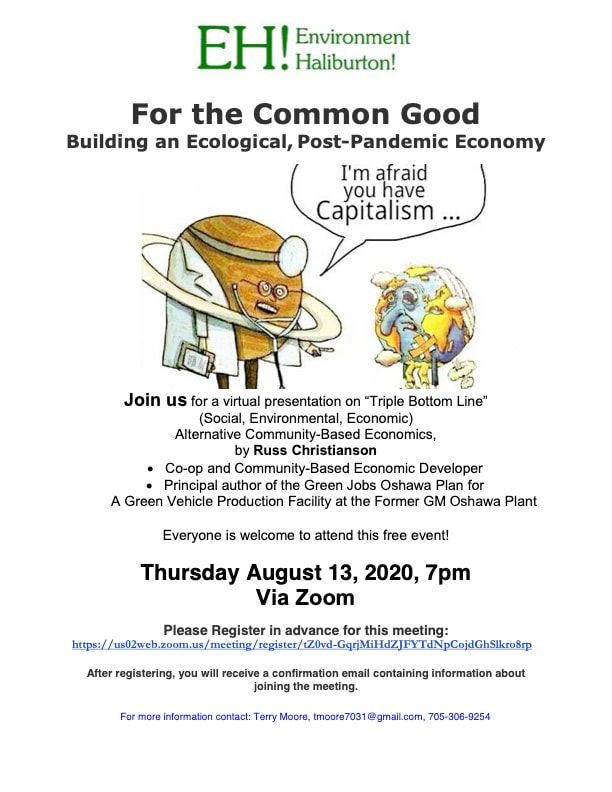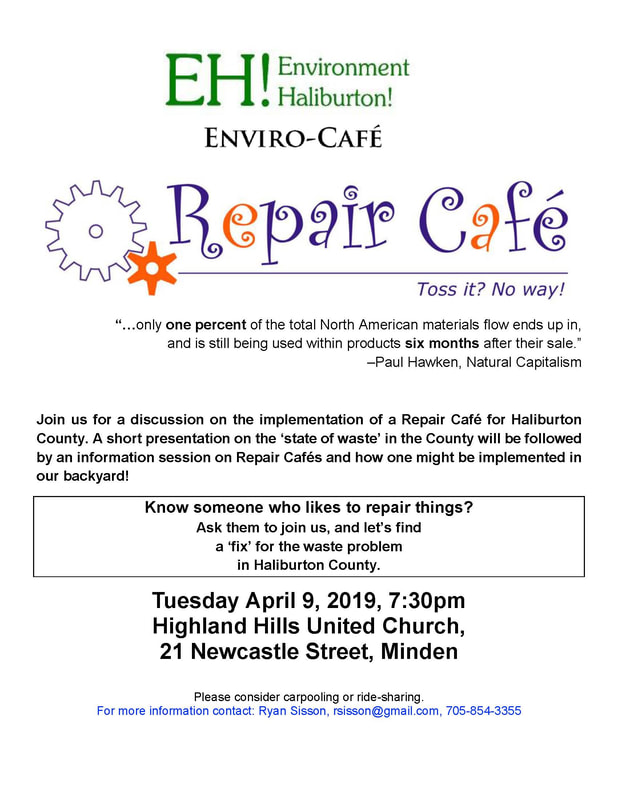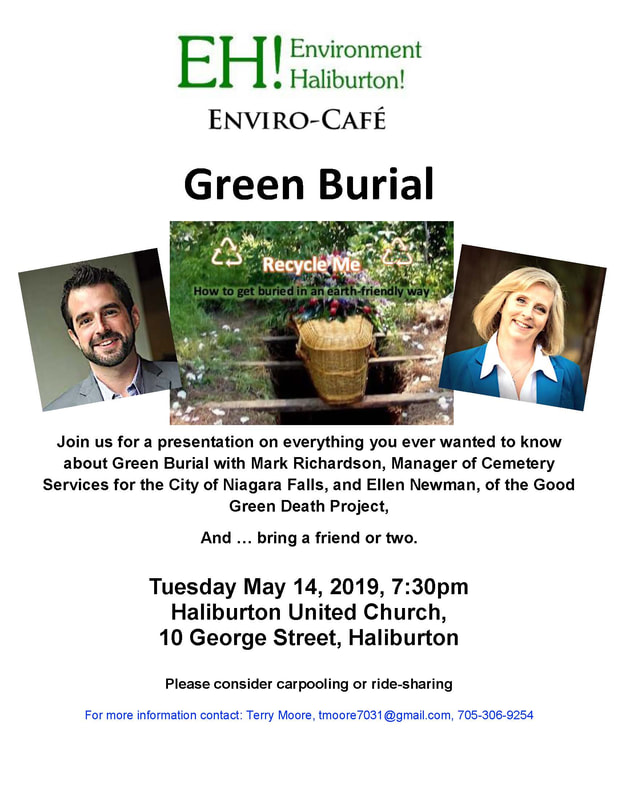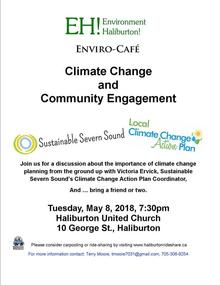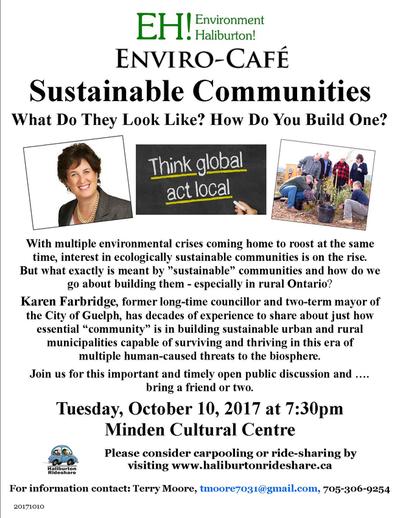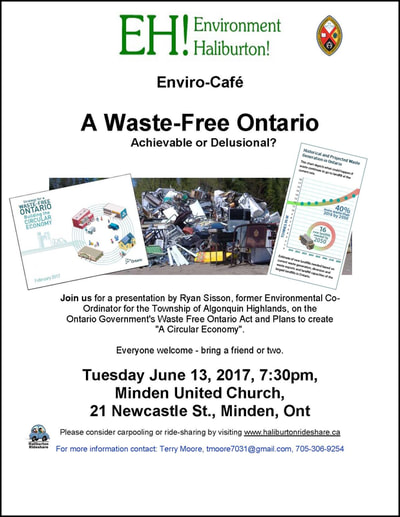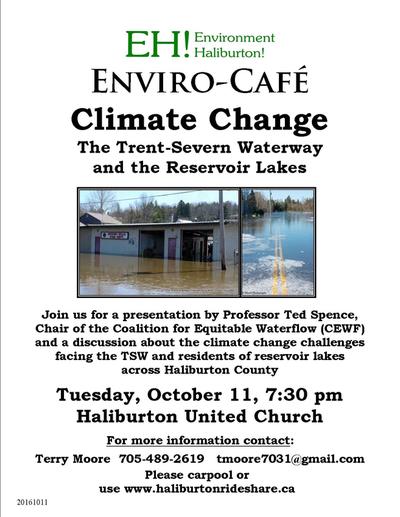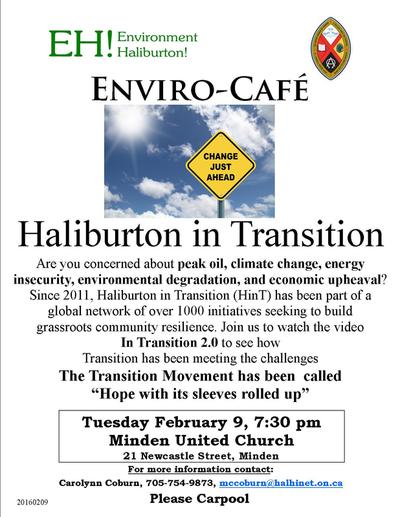Ford's Bogus Plan:
The Climate Emergency and the New FACE OF DENIAL
Tuesday Feb 8, 2022 at 7:30pm
with David Robertson of Seniors for Climate Action Now (SCAN)
With less than 5 months before the June 2, 2022 provincial election, it’s time to take stock of Doug Ford’s climate legacy. Join us for a virtual presentation by David Robertson, from Seniors for Climate Action Now (SCAN!), on the immense and growing cost of Doug Ford’s brand of climate change denial.
"As the International Energy Agency points out in its report this week, how provinces respond to the climate emergency has a huge bearing on whether Canada as a whole will achieve its 2030 climate targets. And by any accounting, Ontario is a climate laggard, more a climate hooligan. The reason is Premier Doug Ford’s Conservative government.
In a federation such as Canada, emission reduction targets are a patchwork quilt of provincial ambition, originally because the Harper government’s decade of inaction and outright hostility left each province and territory to chart its own course on climate. And so, to this day, provincial comparisons are fraught with different targets and dissimilar base years. But Ontario is still a standout, and not in a way that any government should want to be.
When Ford was elected, his government trashed the previous government’s climate initiatives. In their place he set a target to reduce GHG emissions by 30% by 2030. He assured Ontario residents that his “Made in Ontario” plan would do the job. It can’t and it won’t."
David Robertson in theenergymix.com
The video of Mitchell Beer's presentation is here https://vimeo.com/591355984
Making Fossil Fuels History:
Can Renewables Get Us There?

Mitchell Beer is publisher of The Energy Mix, a thrice-weekly e-digest on climate change, energy and carbon-free solutions; and president of Ottawa-based Smarter Shift Inc
For more about Mitchell Beer
https://below2c.org/author/mitchell-beer/
https://www.theenergymix.com/author/mitchellbeer/

On June 8th, Environment Haliburton chose, to take advantage of a presentation by Dr Andrew Peregrine, Professor and Clinical Parisitologist at the Ontario Veterinary College. It was hosted by the Friends of the Napanee and Salmon Rivers titled:
Ticks and Lyme disease:
A TICKing time bomb in Eastern Ontario"
The talk can be viewed at
https://www.youtube.com/watch?v=6WTo5cmqExQ
Below is a resource list that Terry Moore put together for a Planet Haliburton program on August, 2018 entitled
Lyme Disease: The First Epidemic of Climate Change
That episode can be heard here:
https://planet-haliburton.zencast.website/episodes/lyme-disease-w-mary-beth-pfeiffer
Resource List
- Biographical info on Mary Beth Pfeiffer:
- Mary Beth Pfeiffer Facebook Page:
- CanLyme: https://canlyme.com
- Tick Removal Kit: https://canlyme.com/product/tick-removal-kit/
- Pets and Ticks: https://www.petsandticks.com
- Haliburton Kawartha Pine Ridge Health Unit Information on Lyme Disease: https://www.hkpr.on.ca/news_items/keep-your-distance-to-fight-lyme-disease/
https://www.hkpr.on.ca/news_items/time-to-fight-lyme/
- Ticks on the Rise in Haliburton: http://www.haliburtonecho.ca/lyme-on-the-rise
- Mary Beth Pfeiffer Sunday Morning Interview:

My Shoreline, Our Lake
Bringing the Science Together
Katie Paroschyhas a Bachelor of Environmental Science degree from Trent University and a Master’s degree in Resource and Environmental Management from Dalhousie University.
She has worked for governmental organizations including a number of municipalities, the MNRF, MECP, and the Canadian Forest Service. Most recently, Katie has started an environmental consulting business with two colleagues called Zygoptera Consulting and Permit Management. Katie lives in Haliburton County where she enjoys cross country skiing, fishing and tending the vegetable garden with her husband and young son.

Lake Shore Capacity Project
Planning for Healthy Lakes and Shorelines
Mar 9, 2021 07:30 PM Eastern Time (US and Canada)
Dr Neil Hutchinson spoke on the Lakeshore Capacity Assessment Project
Lakeshore Capacity Assessment Handbook: Protecting Water Quality in Inland Lakes
Blue Green Algae:
The Good , the Bad, and the Ugly
February 9, 7:30pm
June eNviroCafé
Bob Sandford holds the Global Water Futures Chair in Water and Climate Security at the United Nations University Institute for Water, Environment and Health. In this capacity Bob was the co-author of the UN Water in the World We Want report on post-2015 global sustainable development goals relating to water. He is also lead author of Canada in the Global World, a new United Nations expert report examining the capacity of Canada’s water sector to meet and help others meet the United Nations 2030 Transforming Our World water-related Sustainable Development Goals.
In his work Bob is committed to translating scientific research outcomes into language decision-makers can use to craft timely and meaningful public policy and to bringing international example to bear on local water issues. To this end, Bob is also senior advisor on water issues for the Interaction Council, a global public policy forum composed of more than thirty former Heads of State including Canadian Prime Minister Jean Chretien, U.S. President Bill Clinton and the former Prime Minister of Norway, Gro Brundtland. Bob is also a Fellow of the Centre for Hydrology at the University of Saskatchewan and a member of Canada’s Forum for Leadership on Water (FLOW), a national water policy research group centred in Toronto.
Bob is also the author, co-author or editor of more than thirty books including Cold Matters: The State & Fate of Canada’s Snow and Ice; Saving Lake Winnipeg; Flood Forecast: Climate Risk & Resilience in Canada; The Columbia River Treaty: A Primer; Storm Warning: Water & Climate Security in a Changing Canada and The Climate Nexus: Water, Food, Energy and Biodiversity, which he co-authored with former Deputy Minister of Environment Jon O’Riordan, all published by Rocky Mountain Books. The Columbia Icefield and North America in the Anthropocene followed in 2016, both published also by Rocky Mountain Books. They were followed in 2017 by The Hard Work of Hope: Climate Change in the Trump Era, co-authored again with Jon O’Riordan. Our Vanishing Glaciers: The Snows of Yesteryear and the Future Climate of the Mountain West recently won the prestigious $10,000 Lane Anderson Award for the best science writing in Canada in 2017. Quenching the Dragon: The China-Canada Water Crisis was published by Rocky Mountain Books in the fall of 2018. His latest books Rain Comin’ Down and The Anthropocene Disruption were published in 2019.
Resource List for EH! Enviro-Café, June 9, 2020
The Transformational Moment: Global Reset and the Future of Hope
June 9, 2020
1. Bob Sandford Biographical Information: http://www.rwsandford.ca
2. Creatively United “Creative Solutions for a New World” Webinar Series:
https://creativelyunited.org/earthfest-live/
3. Information on Creatively United: https://creativelyunited.org/about/
4. UN Sustainable Development Goals: https://sustainabledevelopment.un.org/?menu=1300
5. Critiques of UN Sustainable Development Goals Framework:
6. Degrowth Canada: https://degrowthcanada.wordpress.com
7. “Degrowth considered”: https://climateandcapitalism.com/2018/09/06/degrowth-a-limited-
vision-of-ecological-society/
8. “Capitalism and Degrowth—An Impossibility Theorem”:
https://climateandcapitalism.com/2011/01/11/capitalism-and-degrowth-an-impossibility- theorem/
The Transformational Moment: Global Reset and the Future of Hope
June 9, 2020
1. Bob Sandford Biographical Information: http://www.rwsandford.ca
2. Creatively United “Creative Solutions for a New World” Webinar Series:
https://creativelyunited.org/earthfest-live/
3. Information on Creatively United: https://creativelyunited.org/about/
4. UN Sustainable Development Goals: https://sustainabledevelopment.un.org/?menu=1300
5. Critiques of UN Sustainable Development Goals Framework:
- A Critique of the Sustainable Development Goals’ Potential to Realize the Human Rights of All: Why being better than the MDGs is not good enough: https://cpb-us- w2.wpmucdn.com/campuspress.yale.edu/dist/6/1129/files/2015/10/SDG-HR_Rev-Jan-25- uugh97.pdf
- “The contradiction of the sustainable development goals: Growth versus ecology on a finite planet”: https://onlinelibrary.wiley.com/doi/abs/10.1002/sd.1947 (NOTE: if you want a copy of the full article please send an email to Terry Moore ([email protected])
- “Environmental justice and the SDGs: from synergies to gaps and contradictions:
- “SDG 8: Economic Growth or Degrowth?”:
6. Degrowth Canada: https://degrowthcanada.wordpress.com
7. “Degrowth considered”: https://climateandcapitalism.com/2018/09/06/degrowth-a-limited-
vision-of-ecological-society/
8. “Capitalism and Degrowth—An Impossibility Theorem”:
https://climateandcapitalism.com/2011/01/11/capitalism-and-degrowth-an-impossibility- theorem/

At its simplest, a Green New Deal is a bold vision for tackling climate change and inequality at the same time. It’s a plan to deal with climate change at the scale that science, and justice, demand. We think that a Green New Deal for Canada needs to achieve four goals:
1. It meets the scale and urgency of the climate crisis, listening to and basing its prescriptions for climate action on the best available science.
1. It meets the scale and urgency of the climate crisis, listening to and basing its prescriptions for climate action on the best available science.
- 2. It creates millions of good jobs through a historic economic mobilization to get Canada to 100% renewable energy that works for everyone.
- 3. It enshrines dignity, justice, and equity for all, ensuring climate solutions are solutions that lift up all communities and reflect the reality that frontline, marginalized and Indigenous communities are bearing the brunt of fossil fuel and climate impacts.
- 4. It works in service of real reconciliation — respecting the rights, title and sovereignty of Indigenous Peoples.

Green or Natural burial is the interment of the body of a dead person in the soil in a manner that does not inhibit decomposition but allows the body to recycle naturally. It is an alternative to other contemporary Western burial methods and funerary customs.
"What we call green burial today would have been known as traditional burial for all of human history up until the 20th century. In green burial, the deceased is not embalmed with toxic chemicals. Instead the body is either left in its natural state or embalmed with non-toxic, formaldehyde-free fluids. Only biodegradable materials are used, such as natural-fiber shrouds and caskets made of pine, wicker, bamboo, or paper. There is no concrete vault or liner placed around the casket so the body is in direct contact with the earth."
|
"A Repair Café is a meeting in which people repair household electrical and mechanical devices, computers, bicycles, clothing, etc. They are organised by and for local residents. Repair Cafés are held at a fixed location where tools are available and where they can fix their broken goods with the help of volunteers. Its objectives are to reduce waste, to maintain repair skills and to strengthen social cohesion."
https://spectrum.ieee.org/podcast/geek-life/hands-on/repair-cafe-fixing-the-world-one-broken-toaster-at-a-time |
Extinction Rebellion and SchoolStrike4Climate

From an 84 year old friend
For 5 or 6 weeks, 3 of us from the Ecovillage where I live have been going to the town nearest us (Orangeville) every Friday and walking up both sides of the main street from noon until 1 p.m. with signs.
My sign says "Climate Action Now !!!" on one side and "We Need A Future For All Of Us" on the other side.
On our best day so far, 5 other people have joined us. Some people driving by give us a honk or thumbs up. I'm looking forward to swarms of people filling the streets before we're done.
We were inspired by Greta Thunberg, the 16 year old Swedish girl who started Fridays for Future, and spoke at the UN, calling for action on Climate Change.
Sometimes it has been extremely cold, but not as bad as the heat we face without major action.
From Greta Thunberg
Recently I’ve seen many rumors circulating about me and enormous amounts of hate. This is no surprise to me. I know that since most people are not aware of the full meaning of the climate crisis (which is understandable since it has never been treated as a crisis) a school strike for the climate would seem very strange to people in general.
So let me make some things clear about my school strike.
In may 2018 I was one of the winners in a writing competition about the environment held by Svenska Dagbladet, a Swedish newspaper. I got my article published and some people contacted me, among others was Bo Thorén from Fossil Free Dalsland. He had some kind of group with people, especially youth, who wanted to do something about the climate crisis.
I had a few phone meetings with other activists. The purpose was to come up with ideas of new projects that would bring attention to the climate crisis. Bo had a few ideas of things we could do. Everything from marches to a loose idea of some kind of a school strike (that school children would do something on the schoolyards or in the classrooms). That idea was inspired by the Parkland Students, who had refused to go to school after the school shootings.
I liked the idea of a school strike. So I developed that idea and tried to get the other young people to join me, but no one was really interested. They thought that a Swedish version of the Zero Hour march was going to have a bigger impact. So I went on planning the school strike all by myself and after that I didn’t participate in any more meetings.
When I told my parents about my plans they weren’t very fond of it. They did not support the idea of school striking and they said that if I were to do this I would have to do it completely by myself and with no support from them. just a messenger, and yet I get all this hate. I am not saying anything new, I am just saying what scientists have repeatedly said for decades. And I agree with you, I’m too young to do this. We children shouldn’t have to do this. But since almost no one is doing anything, and our very future is at risk, we feel like we have to continue.
And if you have any other concern or doubt about me, then you can listen to my TED talk ( https://www.ted.com/…/greta_thunberg_the_disarming_…/up-next ), in which I talk about how my interest for the climate and environment began.
And thank you everyone for you kind support! It brings me hope.
/Greta
Other reading
Extinction Rebellion Is Calling You To Join The Nonviolent Civil Disobedience
https://cleantechnica.com/2019/02/12/extinction-rebellion-is-calling-you-to-join-the-nonviolent-civil-disobedience/
A passionate message by George Monbiot at the Extinction Rebellion
www.youtube.com/watch?v=FPT3950UGuk
Extinction Rebellion actions in London
https://www.indcatholicnews.com/news/36519?fbclid=IwAR3nJVxrajwV3UKgL78gVWmIWoxmHihs5-Zf8SF_Fw1sDguHedxRvgZQ5goam
Extinction Rebellion and SchoolStrike4Climate Resources
For 5 or 6 weeks, 3 of us from the Ecovillage where I live have been going to the town nearest us (Orangeville) every Friday and walking up both sides of the main street from noon until 1 p.m. with signs.
My sign says "Climate Action Now !!!" on one side and "We Need A Future For All Of Us" on the other side.
On our best day so far, 5 other people have joined us. Some people driving by give us a honk or thumbs up. I'm looking forward to swarms of people filling the streets before we're done.
We were inspired by Greta Thunberg, the 16 year old Swedish girl who started Fridays for Future, and spoke at the UN, calling for action on Climate Change.
Sometimes it has been extremely cold, but not as bad as the heat we face without major action.
From Greta Thunberg
Recently I’ve seen many rumors circulating about me and enormous amounts of hate. This is no surprise to me. I know that since most people are not aware of the full meaning of the climate crisis (which is understandable since it has never been treated as a crisis) a school strike for the climate would seem very strange to people in general.
So let me make some things clear about my school strike.
In may 2018 I was one of the winners in a writing competition about the environment held by Svenska Dagbladet, a Swedish newspaper. I got my article published and some people contacted me, among others was Bo Thorén from Fossil Free Dalsland. He had some kind of group with people, especially youth, who wanted to do something about the climate crisis.
I had a few phone meetings with other activists. The purpose was to come up with ideas of new projects that would bring attention to the climate crisis. Bo had a few ideas of things we could do. Everything from marches to a loose idea of some kind of a school strike (that school children would do something on the schoolyards or in the classrooms). That idea was inspired by the Parkland Students, who had refused to go to school after the school shootings.
I liked the idea of a school strike. So I developed that idea and tried to get the other young people to join me, but no one was really interested. They thought that a Swedish version of the Zero Hour march was going to have a bigger impact. So I went on planning the school strike all by myself and after that I didn’t participate in any more meetings.
When I told my parents about my plans they weren’t very fond of it. They did not support the idea of school striking and they said that if I were to do this I would have to do it completely by myself and with no support from them. just a messenger, and yet I get all this hate. I am not saying anything new, I am just saying what scientists have repeatedly said for decades. And I agree with you, I’m too young to do this. We children shouldn’t have to do this. But since almost no one is doing anything, and our very future is at risk, we feel like we have to continue.
And if you have any other concern or doubt about me, then you can listen to my TED talk ( https://www.ted.com/…/greta_thunberg_the_disarming_…/up-next ), in which I talk about how my interest for the climate and environment began.
And thank you everyone for you kind support! It brings me hope.
/Greta
Other reading
Extinction Rebellion Is Calling You To Join The Nonviolent Civil Disobedience
https://cleantechnica.com/2019/02/12/extinction-rebellion-is-calling-you-to-join-the-nonviolent-civil-disobedience/
A passionate message by George Monbiot at the Extinction Rebellion
www.youtube.com/watch?v=FPT3950UGuk
Extinction Rebellion actions in London
https://www.indcatholicnews.com/news/36519?fbclid=IwAR3nJVxrajwV3UKgL78gVWmIWoxmHihs5-Zf8SF_Fw1sDguHedxRvgZQ5goam
Extinction Rebellion and SchoolStrike4Climate Resources

Film review: A Plastic Ocean shows us a world awash with rubbish
https://theconversation.com/film-review-a-plastic-ocean-shows-us-a-world-awash-with-rubbish-74534
We live in a world of plastic. Shopping bags, drink bottles, your toothbrush and even your clothes are among the everyday items made from plastic. But plastic isn’t fantastic, and neither is the current state of our environment.
Humans have been mass-producing plastic since the 1950s. We produce hundreds of millions of tonnes of plastic every year and production is only increasing. Unfortunately, most of it is used only once and then thrown away.
Only a small proportion of plastic is recycled. The majority ends up in landfill or, in the worst case scenario, our oceans.
A Plastic Ocean is a documentary film directed by the Australian journalist Craig Leeson. It dives into and investigates the devastating impacts that plastic has caused to our environment, especially our marine life.
What starts off as an adventure to film the blue whale, the largest animal on the planet, leads to the shocking discovery of a thick layer of plastic debris floating in the middle of the Indian Ocean. Craig, alongside Tanya Streeter, a world record-breaking free diver and environmental activist, then travel across the globe to report on the havoc caused by decades of plastic use.
The film presents beautiful shots of the marine environment. This contrasts with footage of heavily polluted cities and dumps full of plastic rubbish. The juxtaposition between these images sends the message that our actions and choices can severely impact the planet. Throughout the film, experts are interviewed to provide further insight into some of the problems derived from plastic.
Impacts of plastic usePlastic is so widely used because it is durable and cheap. Unfortunately, this durability is the same quality that makes it so detrimental to the environment. Most plastics do not break down chemically. Instead, they break into smaller and smaller pieces that can persist in the environment for an extensive period of time.
Because it is so affordable, developing countries use plastics extensively. However, many regions lack proper waste management, and much of the rubbish is washed into the ocean when it rains. As a result, a large percentage of all plastics in the ocean are due to only a handful of countries. Scientists estimate that more than 5 trillion pieces of plastic are currently floating in our oceans.
Throughout the film, we are shown footage of numerous marine species that have been affected by plastic debris. Marine animals and sea birds often mistake floating plastic for food. Large pieces of plastic, when eaten, can obstruct the animals’ digestive tracts of the animals, essentially starving them to death.
When smaller “microplastics” are ingested, toxins are released and become stored in their tissue. These toxins accumulate up the food chain and can eventually end up on our dinner tables. The consumption of the contaminated seafood can cause many health problems including cancer, immune system problems, and even childhood developmental issues. This is a major problem, as almost a fifth of the world’s population relies on the ocean for their primary source of protein. Society’s huge appetite for plastic is literally poisoning us.
The future of plasticsThere is no quick fix for a problem that has grown hugely over the past few decades. The use of plastics is so ingrained in society that it is all but impossible to eliminate them completely.
The film does, however, offer various strategies that can be implemented to reduce the impact of plastics.
Ideally, avoid plastic-containing products as much as possible. Avoid single-use plastic products and recycle whatever you can. Local governments also need to implement a refund scheme for the return of plastic bottles to incentivise recycling.
For unrecyclable plastics, new technology has been developed to convert them into fuel, providing a second life for those plastics.
It is up to us to embrace these changes and move away from the plastic culture. We need to get this problem under control, as it will only become worse as the human population increases. Our marine animals deserve to live in a blue ocean, not a plastic soup.
https://theconversation.com/film-review-a-plastic-ocean-shows-us-a-world-awash-with-rubbish-74534
We live in a world of plastic. Shopping bags, drink bottles, your toothbrush and even your clothes are among the everyday items made from plastic. But plastic isn’t fantastic, and neither is the current state of our environment.
Humans have been mass-producing plastic since the 1950s. We produce hundreds of millions of tonnes of plastic every year and production is only increasing. Unfortunately, most of it is used only once and then thrown away.
Only a small proportion of plastic is recycled. The majority ends up in landfill or, in the worst case scenario, our oceans.
A Plastic Ocean is a documentary film directed by the Australian journalist Craig Leeson. It dives into and investigates the devastating impacts that plastic has caused to our environment, especially our marine life.
What starts off as an adventure to film the blue whale, the largest animal on the planet, leads to the shocking discovery of a thick layer of plastic debris floating in the middle of the Indian Ocean. Craig, alongside Tanya Streeter, a world record-breaking free diver and environmental activist, then travel across the globe to report on the havoc caused by decades of plastic use.
The film presents beautiful shots of the marine environment. This contrasts with footage of heavily polluted cities and dumps full of plastic rubbish. The juxtaposition between these images sends the message that our actions and choices can severely impact the planet. Throughout the film, experts are interviewed to provide further insight into some of the problems derived from plastic.
Impacts of plastic usePlastic is so widely used because it is durable and cheap. Unfortunately, this durability is the same quality that makes it so detrimental to the environment. Most plastics do not break down chemically. Instead, they break into smaller and smaller pieces that can persist in the environment for an extensive period of time.
Because it is so affordable, developing countries use plastics extensively. However, many regions lack proper waste management, and much of the rubbish is washed into the ocean when it rains. As a result, a large percentage of all plastics in the ocean are due to only a handful of countries. Scientists estimate that more than 5 trillion pieces of plastic are currently floating in our oceans.
Throughout the film, we are shown footage of numerous marine species that have been affected by plastic debris. Marine animals and sea birds often mistake floating plastic for food. Large pieces of plastic, when eaten, can obstruct the animals’ digestive tracts of the animals, essentially starving them to death.
When smaller “microplastics” are ingested, toxins are released and become stored in their tissue. These toxins accumulate up the food chain and can eventually end up on our dinner tables. The consumption of the contaminated seafood can cause many health problems including cancer, immune system problems, and even childhood developmental issues. This is a major problem, as almost a fifth of the world’s population relies on the ocean for their primary source of protein. Society’s huge appetite for plastic is literally poisoning us.
The future of plasticsThere is no quick fix for a problem that has grown hugely over the past few decades. The use of plastics is so ingrained in society that it is all but impossible to eliminate them completely.
The film does, however, offer various strategies that can be implemented to reduce the impact of plastics.
Ideally, avoid plastic-containing products as much as possible. Avoid single-use plastic products and recycle whatever you can. Local governments also need to implement a refund scheme for the return of plastic bottles to incentivise recycling.
For unrecyclable plastics, new technology has been developed to convert them into fuel, providing a second life for those plastics.
It is up to us to embrace these changes and move away from the plastic culture. We need to get this problem under control, as it will only become worse as the human population increases. Our marine animals deserve to live in a blue ocean, not a plastic soup.

Websites
Scientists Warning website http://www.scientistswarning.org/
http://www.scientistswarning.org/deep-adaptation-a-map-for-navigating-climate-tragedy/
Extinction Rebellion (UK)| Rebel for Life
https://rebellion.earth
Extinction Rebellion is a campaign by the network. We aim to promote a fundamental change of our political and economic system to one which maximises well-being and minimises harm.
https://rebellion.earth/who-we-are/
https://www.facebook.com/ExtinctionRebellion/
Heading for Extinction and what to do about it
The talk and slide show that is being given across the planet. https://www.youtube.com/watch?v=b2VkC4SnwY0
The International Extinction Rebellion website https://xrebellion.org/
https://docs.google.com/document/d/1gN92NvQEAw4MJ5rNAf3kVIJtLcc3KDUJVVYHQjtB-9E/edit
Extinction Rebellion Canada
https://extinctionrebellion.ca/
https://actionnetwork.org/forms/join-the-rebellion-3/?fbclid=IwAR0RbLD_oqYazl874FLCqcHvXlSDCUS7AmCHWbs4iSkVTljSShmFbmHluRE
SchoolStrike4Climate
Greta Thunberg
Greta Thunberg - Home | Facebook
https://www.facebook.com/gretathunbergsweden
How Greta Thunberg's Lone Strike Against Climate Change Became a Global Movement.
The 16-year-old Swedish activist's #FridaysForFuture protests have galvanized young people around the world
Greta Thunberg, schoolgirl climate change warrior: ‘Some people can let things go. I can’t https://www.theguardian.com/world/2019/mar/11/greta-thunberg-schoolgirl-climate-change-warrior-some-people-can-let-things-go-i-cant
Australian School Strike site https://www.schoolstrike4climate.com
Scientists Warning website http://www.scientistswarning.org/
http://www.scientistswarning.org/deep-adaptation-a-map-for-navigating-climate-tragedy/
Extinction Rebellion (UK)| Rebel for Life
https://rebellion.earth
Extinction Rebellion is a campaign by the network. We aim to promote a fundamental change of our political and economic system to one which maximises well-being and minimises harm.
https://rebellion.earth/who-we-are/
https://www.facebook.com/ExtinctionRebellion/
Heading for Extinction and what to do about it
The talk and slide show that is being given across the planet. https://www.youtube.com/watch?v=b2VkC4SnwY0
The International Extinction Rebellion website https://xrebellion.org/
https://docs.google.com/document/d/1gN92NvQEAw4MJ5rNAf3kVIJtLcc3KDUJVVYHQjtB-9E/edit
Extinction Rebellion Canada
https://extinctionrebellion.ca/
https://actionnetwork.org/forms/join-the-rebellion-3/?fbclid=IwAR0RbLD_oqYazl874FLCqcHvXlSDCUS7AmCHWbs4iSkVTljSShmFbmHluRE
SchoolStrike4Climate
Greta Thunberg
Greta Thunberg - Home | Facebook
https://www.facebook.com/gretathunbergsweden
How Greta Thunberg's Lone Strike Against Climate Change Became a Global Movement.
The 16-year-old Swedish activist's #FridaysForFuture protests have galvanized young people around the world
Greta Thunberg, schoolgirl climate change warrior: ‘Some people can let things go. I can’t https://www.theguardian.com/world/2019/mar/11/greta-thunberg-schoolgirl-climate-change-warrior-some-people-can-let-things-go-i-cant
Australian School Strike site https://www.schoolstrike4climate.com
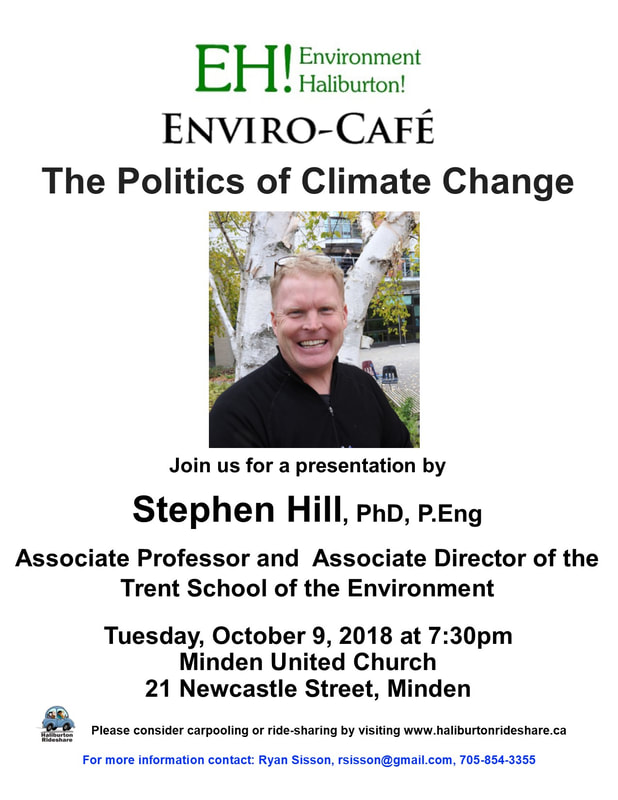
About Stephen Hill
I am the associate director of the School of the Environment at Trent University. I'm interested in understanding policies and actions for preventing climate change, particularly how we produce and consume low-carbon energy. I am also interested in community-based research and work.
I was born and raised in Ontario but spent nearly a decade studying and working in Alberta before finding my home at Trent in 2003. It's a privilege to spend my workday at a university. Little pleases me more than a visit from a student - past, present, or future - or others interested in my work. I am deeply honoured to have been the 2011 winner of the T.H.B. Symons Award for Excellence in Teaching and the 2011 winner of the CMHC Excellence in Education Award (Sustainable Practices).
I'm a social scientist but approach my research and teaching from an interdisciplinary perspective. My background spans a range of fields including a post-doctoral fellowship in the Haskayne School of Business (University of Calgary), a PhD in environmental science from the Faculty of Environmental Design (University of Calgary), and undergraduate degrees in chemical engineering (Queen's) and biology (Queen's). I am a registered professional engineer in the province of Ontario.
Ray Letheren of the Bayfield Blue Community Project
September 11 2018

The Earth Day Canada Hometown Heroes Award Program named Bayfield’s Ray Letheren as a finalist in the Individual category. The national award program recognizes and celebrates environmental leaders who foster meaningful, long-term community awareness and action. “I am humbled and honoured to have been recognized as a finalist in the Hometown Heroes Award Program,” said Letheren. He said being named as a finalist for the award is really a recognition of the many people with whom he has worked over the past 20 years. The award finalist said he is proud of the work the Bayfield and area community has done to increase awareness of the need to protect “our most valuable resource, water.” He thanked his fellow community members for their commitment to water protection. He also thanked his wife Paula for “enduring” throughout his efforts and supporting his “other passion” – water quality.
The finalist recognition honours Letheren for his environmental leadership and for his work to help create a sustainable future in the local community. He is to receive a certificate of recognition in honour of his achievement. As a finalist, he is to be recognized in Earth Day Canada news releases, profiled on the Hometown Heroes Award Program website, and featured in public service announcements sent to print media across Canada.
Letheren is a past recipient (Regional Recipient, Ontario, 1995) of the Prime Minister’s Award for Teaching Excellence. As a Bayfield resident with an interest in protection of water quality, he has continued to educate by writing on ways to reduce environmental impacts, and organizing annual symposia featuring internationally acclaimed presenters. His community work has helped to show how actions to protect Lake Huron fit into the global picture. In 2004, he was recognized as Conservationist of the Year in Ausable Bayfield watersheds. In 2005, Letheren was a recipient of the Glen Hodgins Memorial Award for Volunteer Contributions to Environmental Stewardship for Perth and Huron counties.
The Hometown Heroes Award Program finalist is founder and long-time Chair of the Friends of the Bayfield River. The Friends of the Bayfield River began water quality monitoring in 1999 as part of their work to protect and improve Lake Huron. He has led the community group in an education and remediation program that has been called “ambitious” and that has “engaged all community stakeholders.” The award finalist has organized Great Canadian Shoreline Cleanup events since 2003. In 2003, fundraising and tree planting by the Friends of the Bayfield River led to projects in the headwaters of the Bayfield River. In 2004, Letheren led the work to publish and distribute a 16-page newspaper insert about the Bayfield River. In 2006, he helped to develop the Lakeshore Resident’s Stewardship Manual. This homeowner’s environmental evaluation guide was modeled after the Environmental Farm Plan. The homeowner’s guide idea has been embraced by Lake Simcoe and Parry Sound cottage and seasonal resident groups that are delivering a similar guide. Letheren has written an environmental column, since 2008, which has appeared in local newspapers, most recently in The Paper. In 2014, he founded the Bayfield Blue Community Project with 30 groups committed to reducing plastic consumption.
The Friends of the Bayfield River chairman led the project to create health benefits and water quality education at Bannockburn Conservation Area through the Bannockburn Walk a Mile Project. The community group received funding from a number of partners including the Ontario Ministry of Health and Long-Term Care. The project included a new, professionally-narrated audio tour of the area, nature interpretation signs, pedometers to track trail use, and more. The group has improved trails and restored streams in the Bayfield River. Letheren and the Friends of the Bayfield River have also partnered with the Bayfield River Valley Trails Association on projects to plant trees, educate about water quality, and expand community access to trails with interpretive signage. The award finalist is Past Chair of the Green Committee at the Alexandra Marine and General Hospital in Goderich. He is also a past board member of the TD Canada Trust Environmental Fund.
The award finalist said the national recognition from Earth Day Canada can help to encourage other Canadian communities “to join us in speaking for protection of our water.” He hopes it will also help to inspire local community leaders to consider the concept of sustainability in each decision they make.
The Hometown Heroes Award Program, established in 2004 by Earth Day Canada, recognizes and celebrates environmental leaders, groups and small businesses which foster meaningful, long–term community awareness and action. The Hometown Heroes Award Program is made possible through a partnership with Mill Street Brewery and the RBC Foundation. For information on this award visit https://www.earthday.ca/hometown/ Earth Day Hometown Heroes National Winner was John Barker, a resident of West Vancouver for 48 years, who has dedicated much of his life to environmental stewardship, community awareness and education. Also a finalist was Larry Pomerantz, of Hamilton, founder of Earth Day Hamilton-Burlington, a volunteer-driven non-profit organization committed to improving the environment. Earth Day Canada (EDC), a national environmental charity founded in 1990, provides Canadians with the practical knowledge and tools they need to lessen their impact on the environment. EDC educates, empowers and inspires Canadians to achieve local solutions to improve the state of the environment. EDC educational and recognition programs engage children, students, teachers, families and everyday Canadians.
2018
2017
Facing Extreme Weather
Adapting to a Changing Climate
GEOFF COULSON
Warning Preparedness Meteorologist
Environment and Climate Change Canada

Geoff Coulson has been a meteorologist with Environment and Climate Change Canada for over 33 years. During his career he has been involved in weather forecasting, training, software development and outreach activities. For the last 13 years, Geoff has been a Warning Preparedness Meteorologist providing weather information to all levels of government, the media and the private sector. He also sits on the Provincial Flood Forecast and Warning Committee and manages the CANWARN storm spotter program in Ontario.
CANWARN is a volunteer organization of ham radio operators who report severe weather when they see it to Environment Canada. What they do is called ground-truthing. They confirm on the ground what satellites and radars see in the atmosphere. When Environment Canada's weather centres issue severe weather watches or warnings, they alert the CANWARN volunteers at the organization's regional stations in the affected areas. The volunteers contact other CANWARN members on the ham radio, tell them a watch or warning has been issued and ask them to report signs of approaching severe weather. These include lightning, hail, cumulonimbus clouds or as they are known in the trade CBs, and funnel clouds, which if they touch down are then called tornadoes.
CANWARN is organised in local networks. When CANWARN members spot severe weather, they send their reports to the CANWARN network controller who forwards them to Environment Canada's severe weather office in Toronto using either a special telephone line or the CANWARN web page. At the weather office, the severe weather meteorologist combines the data from the satellites and radar with the information from the ground to refine the forecast or prepare a severe weather watch or warning. In Ontario, CANWARN stations are equipped with computers, printers, and ham radio equipment, and are located in community centres such as airports, police stations and senior citizens complexes.
Info on CanWarn can be found here: http://www.ecoa.ca/canwarn.shtml
CANWARN is a volunteer organization of ham radio operators who report severe weather when they see it to Environment Canada. What they do is called ground-truthing. They confirm on the ground what satellites and radars see in the atmosphere. When Environment Canada's weather centres issue severe weather watches or warnings, they alert the CANWARN volunteers at the organization's regional stations in the affected areas. The volunteers contact other CANWARN members on the ham radio, tell them a watch or warning has been issued and ask them to report signs of approaching severe weather. These include lightning, hail, cumulonimbus clouds or as they are known in the trade CBs, and funnel clouds, which if they touch down are then called tornadoes.
CANWARN is organised in local networks. When CANWARN members spot severe weather, they send their reports to the CANWARN network controller who forwards them to Environment Canada's severe weather office in Toronto using either a special telephone line or the CANWARN web page. At the weather office, the severe weather meteorologist combines the data from the satellites and radar with the information from the ground to refine the forecast or prepare a severe weather watch or warning. In Ontario, CANWARN stations are equipped with computers, printers, and ham radio equipment, and are located in community centres such as airports, police stations and senior citizens complexes.
Info on CanWarn can be found here: http://www.ecoa.ca/canwarn.shtml




